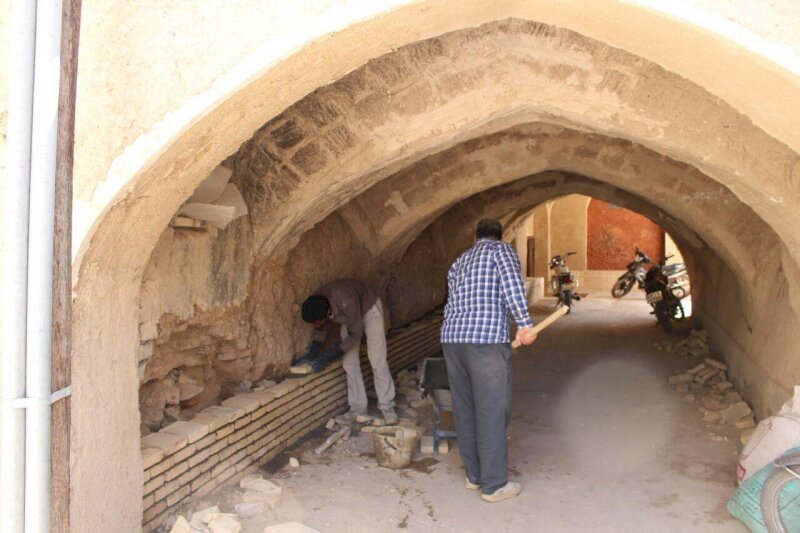Historical sabat in central Iran being restored

TEHRAN – A historical sabat in the ancient neighborhood of Noabad in the city of Na’in, central Isfahan province, has undergone some rehabilitation works, a provincial tourism chief has said.
Sabat is an arched structure built between the opposite buildings on both sides of a narrow street in tropical and desert areas and it creates shade and a cool place for passers-by. Due to its semi-covered nature, this structure creates air blinds in summer, which cools the air inside sabat and in winter makes the air warmer.
The restoration project aims at replacing worn-out bricks and repairing the rooftop and walls of the historic sabat, which has been damaged by rain moisture, CHTN quoted Mahmud Madanian as saying on Sunday.
Considering the desert climate of the region, most of the historical neighborhoods have sabats, which also help to strengthen the side houses, the official added.
He also noted that in collaboration with the private sector, three historical houses next to the sabat are being restored to turn into eco-lodge units.
Well regarded for its hospitable people, handicrafts, and ancient qanats (manmade subterranean aqueducts that bring water from the mountains), Na’in dates back to nearly 2000 years, which makes it one of the oldest continuously settled towns in the Iranian plateau.
Na’in is home to one of the oldest mosques in the country. Originally constructed in c. 10th century, Jameh Mosque of Na’in is was one of the first mosques built in Iran and is unusual in that it doesn’t conform to the usual four-iwan pattern of its time (for instance Jameh Mosque of Isfahan).
Na’in lies 170 km north of Yazd and 140 km east of Isfahan. Like much of the Iranian plateau, it has a desert climate, with a maximum temperature of 41 °C in summer, and a minimum of -9 °C in winter
During ancient times, the city was at the junction of a desert road that connected Tabas and Mashhad, it used to be an important crossroad on converging trade routes since Sassanid times.
Na’in was known for its ceramics and textiles; today it's primarily known for fine hand-knotted carpets and for hand-loomed camel-wool cloaks, which are produced in the neighboring villages.
ABU/MG

Leave a Comment